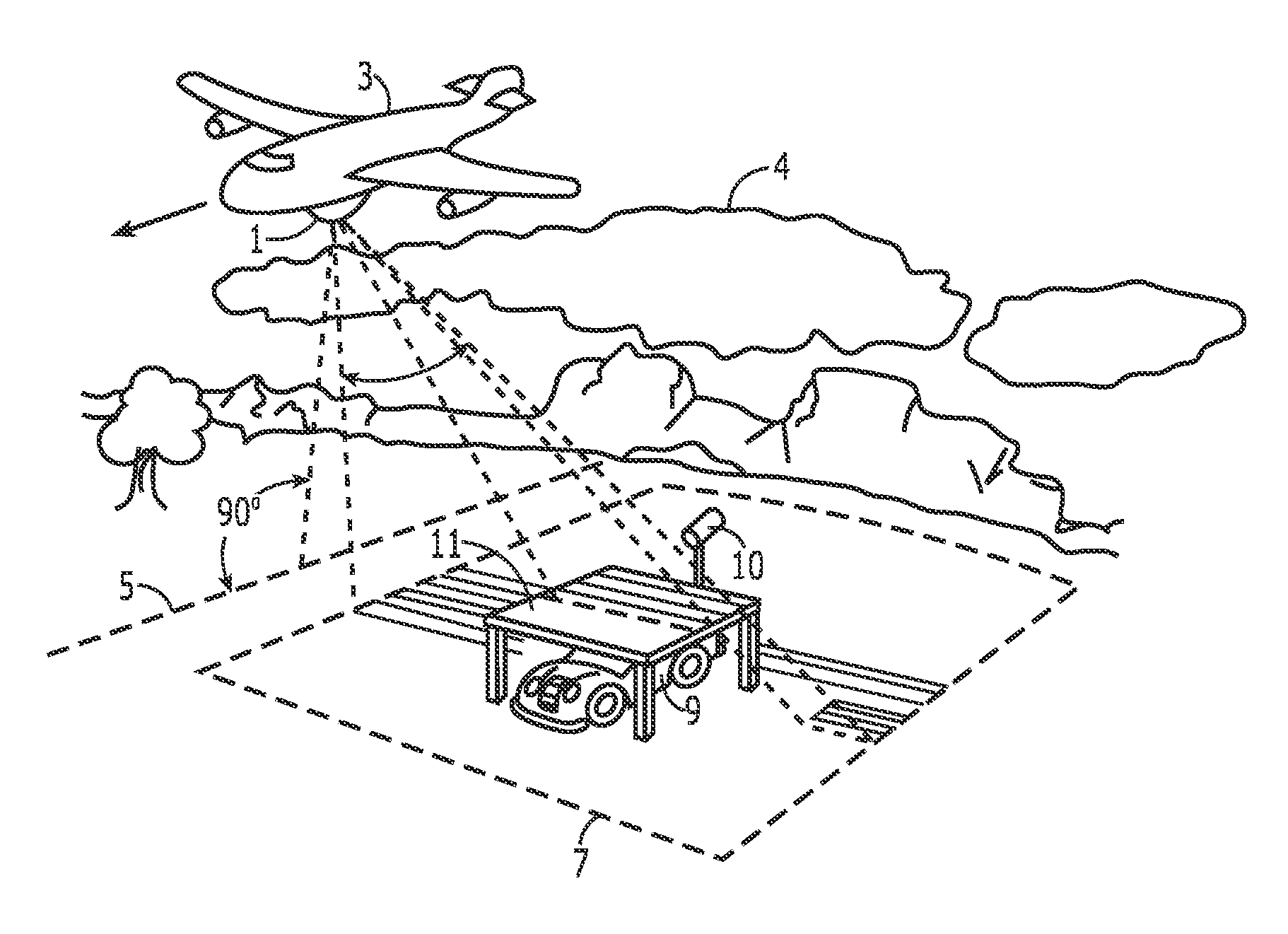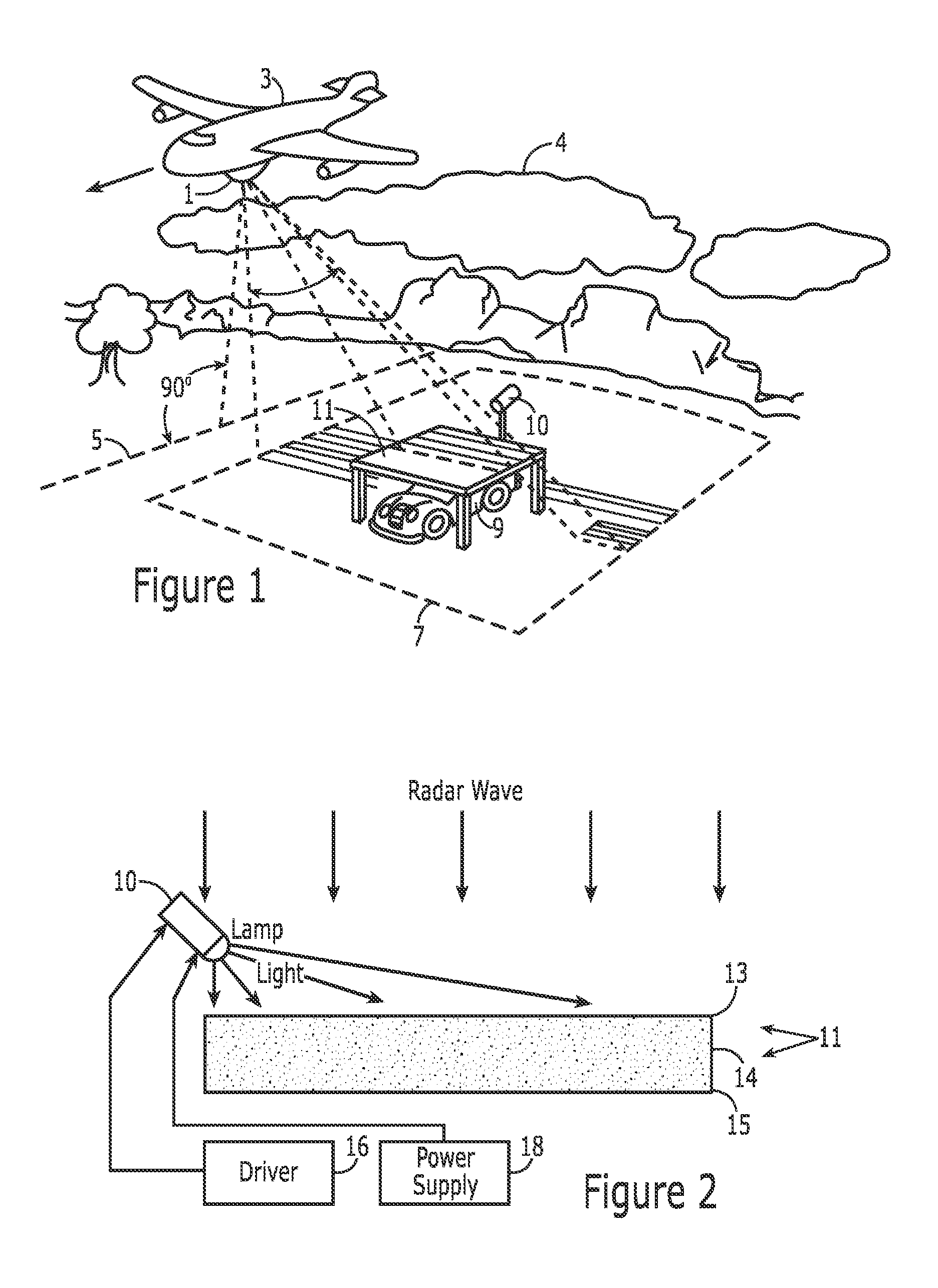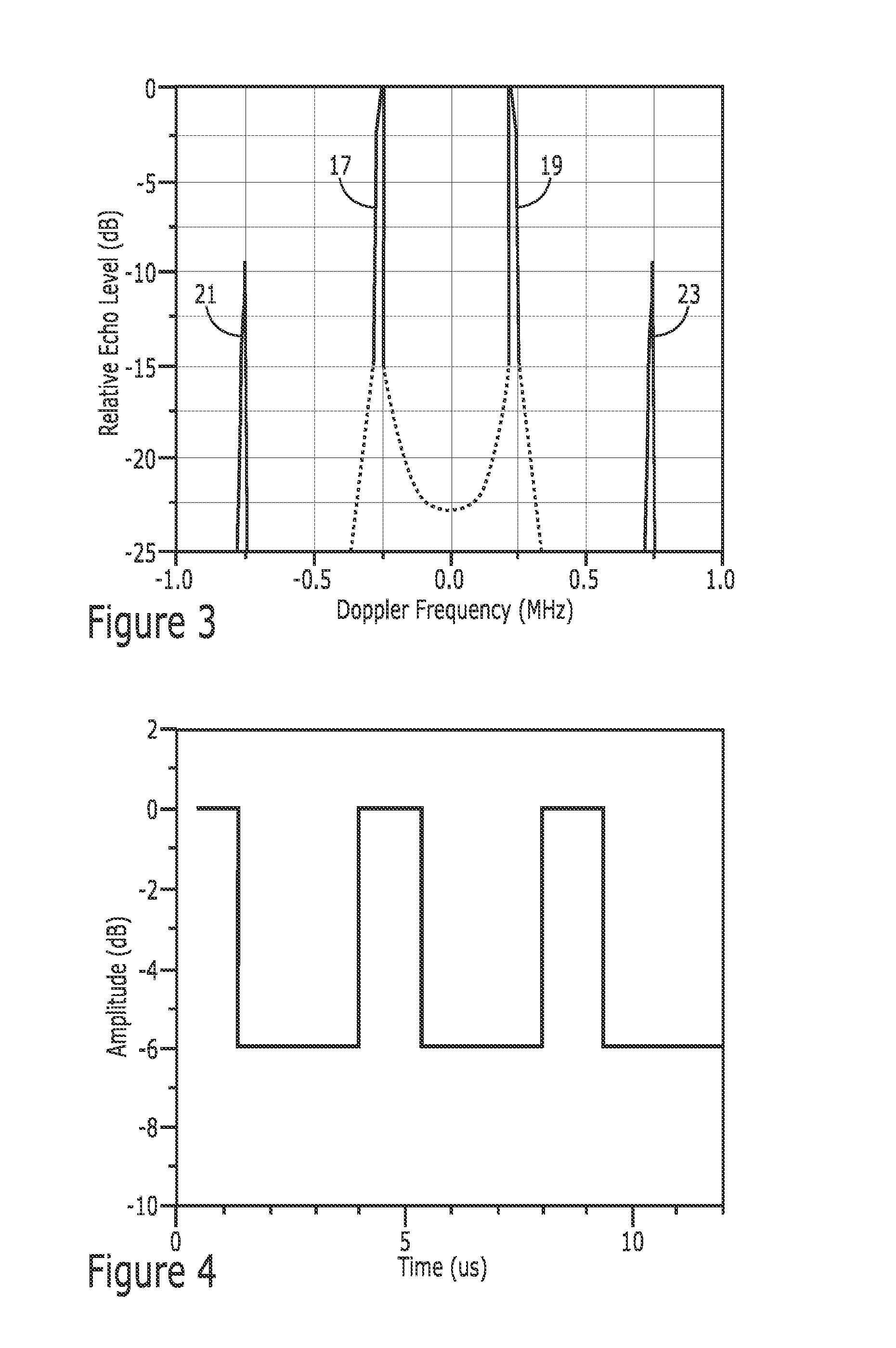Synthetic aperture radar smearing
a technology of synthetic aperture and radar, applied in the direction of camouflage devices, instruments, using reradiation, etc., can solve the problems of no effective way to conceal one's activities from the surveillance of radar, object is compromised, etc., and achieve the effect of modulation
- Summary
- Abstract
- Description
- Claims
- Application Information
AI Technical Summary
Benefits of technology
Problems solved by technology
Method used
Image
Examples
Embodiment Construction
[0034]As generally represented in FIG. 1, radar 1, carried by aircraft 3, moves over the clouds 4 along a route indicated by dash line 5 on the ground surface. The radar “looks” sideways and down, its beam of pulsed RF extending sideways across a region of ground 7 to one side of the aircraft's route. As the aircraft travels forward, its radar continues to electronically view the region from slightly different celestial positions, as is conventional to synthetic aperture type radars. A truck 9, a potential target, is located within the region being surveyed. The truck however is garaged under cover of countermeasure shield 11, which is supported over the truck by posts of low reflectivity material, and, as hereafter described, remains effectively hidden from the radar. A light source 10, which may appear to the radar as a rock if the radar's resolution is sufficient to detect it, is mounted over and illuminates protective shield 11.
[0035]As viewed in the not to scale pictorial parti...
PUM
 Login to View More
Login to View More Abstract
Description
Claims
Application Information
 Login to View More
Login to View More - R&D
- Intellectual Property
- Life Sciences
- Materials
- Tech Scout
- Unparalleled Data Quality
- Higher Quality Content
- 60% Fewer Hallucinations
Browse by: Latest US Patents, China's latest patents, Technical Efficacy Thesaurus, Application Domain, Technology Topic, Popular Technical Reports.
© 2025 PatSnap. All rights reserved.Legal|Privacy policy|Modern Slavery Act Transparency Statement|Sitemap|About US| Contact US: help@patsnap.com



